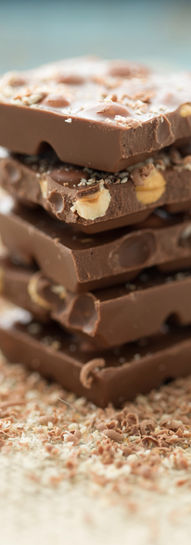our cacao beans
QUALITY CACAO FROM AROUND THE GLOBE
The cacao tree is native to the Amazon Basin. It was domesticated by the Olmecs and Mocayas (Mexico and Central America). More than 4,000 years ago, it was consumed by pre-Columbian cultures along the Yucatán, including the Mayans, and as far back as Olmeca civilization in spiritual ceremonies. It also grows in the foothills of the Andes in the Amazon and Orinoco basins of South America, in Colombia and Venezuela. The three main varieties of cocoa plant are Forastero, Criollo, and Trinitario. The first is the most widely used, comprising 80-90% of the world production of cocoa.
Cocoa trees grow in hot, rainy tropical areas within 20° of latitude from the Equator. Cocoa harvest is not restricted to one period per year and a harvest typically occurs over several months. In fact, in many countries, cocoa can be harvested at any time of the year. Immature cocoa pods have a variety of colours, but most often are green, red, or purple, and as they mature, their colour tends towards yellow or orange, particularly in the creases. Unlike most fruiting trees, the cacao pod grows directly from the trunk or large branch of a tree rather than from the end of a branch, similar to jackfruit.
To make 1 kg (2.2 lb) of chocolate, about 300 to 600 beans are processed, depending on the desired cocoa content. In a factory, the beans are roasted. Next, they are cracked and then deshelled by a "winnower". The resulting pieces of beans are called nibs. They are sometimes sold in small packages at specialty stores and markets to be used in cooking, snacking, and chocolate dishes. Since nibs are directly from the cocoa tree, they contain high amounts of theobromine. Most nibs are ground, using various methods, into a thick, creamy paste, known as chocolate liquor or cocoa paste. This "liquor" is then further processed into chocolate by mixing in (more) cocoa butter and sugar (and sometimes vanilla and lecithin as an emulsifier), and then refined, conched and tempered. Alternatively, it can be separated into cocoa powder and cocoa butter using a hydraulic press or the Broma process. This process produces around 50% cocoa butter and 50% cocoa powder. Standard[clarification needed] cocoa powder has a fat content around 10–12%. Cocoa butter is used in chocolate bar manufacture, other confectionery, soaps, and cosmetics.

